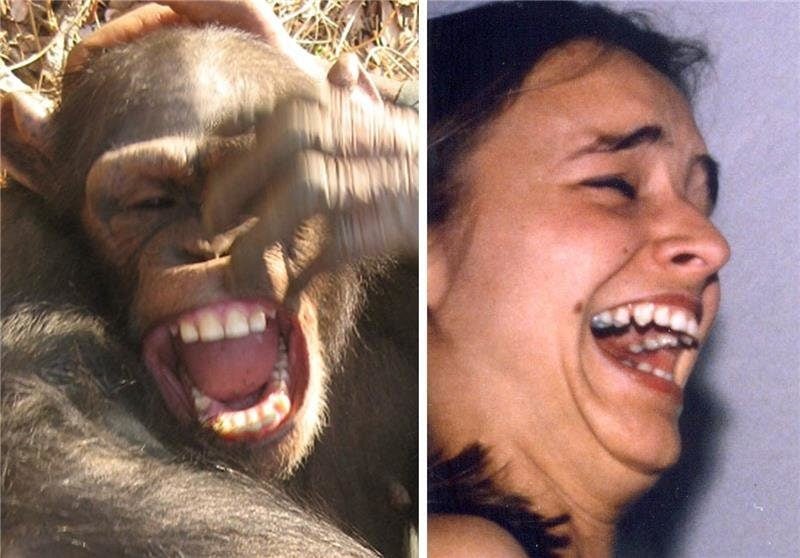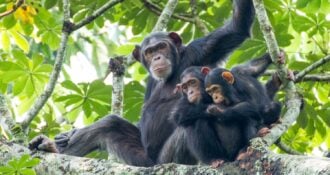Marina Davila-Ross was awarded a grant from The Leakey Foundation in the spring of 2015 for her research project entitled “Systematically testing facial thermal imaging as a most sensitive and reliable novel technology to directly compare subtle emotion changes in apes and humans.” Her work on facial expressions and laughter in chimpanzees was recently published in the journal PLOS ONE.
Chimpanzee facial expressions, vocalizations used differently during play
Chimpanzees may be able to use facial expressions and vocalizations flexibly, notably during physical contact play, according to a study published June 10, 2015 in the open-access journal PLOS ONE by Leakey Foundation grantee, Marina Davila-Ross from the University of Portsmouth, UK and colleagues.

The ability to flexibly produce facial expressions and vocalizations has a strong impact on the way humans communicate, but scientists’ understanding of nonhuman primate facial expressions and vocalizations is limited. The authors of this study investigated whether chimpanzees produce the same types of facial expressions with and without accompanying vocalizations, as do humans. Forty-six chimpanzees were video-recorded during spontaneous play at the Chimfunshi Wildlife Orphanage, Zambia. ChimpFACS, a standardized coding system, was applied to measure chimpanzee facial movements, based on Facial Action Coding System (FACS) developed for humans.
Data showed that chimpanzees produced the same fourteen open-mouthed facial expressions when laugh sounds were present as when they weren’t. Based on the data, the authors suggest that chimpanzees produce these facial expressions flexibly, without being constrained by the accompanying vocalizations. Furthermore, the data indicated that the facial expression in addition to vocalization, as well as the facial expression alone, were used differently in social play, for instance, when in physical contact with playmates and when matching playmates’ open-mouthed faces. These findings support the idea that chimpanzees produce distinctive facial expressions independently from a vocalization, and that their use affects communicative meaning, as both traits are important for a more explicit and versatile way of communicating.
Click here to read the paper on PLOS ONE.
Citation: Davila-Ross M, Jesus G, Osborne J, Bard KA (2015) Chimpanzees (Pan troglodytes) Produce the Same Types of ‘Laugh Faces’ when They Emit Laughter and when They Are Silent.PLoS ONE 10(6): e0127337. doi:10.1371/journal.pone.0127337






Comments 0